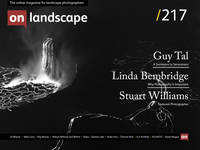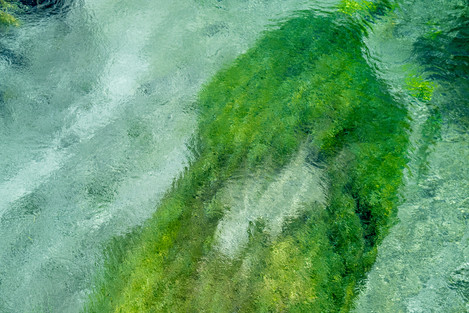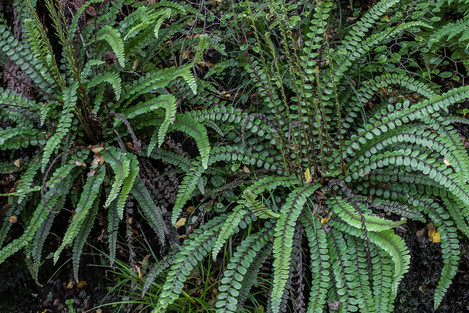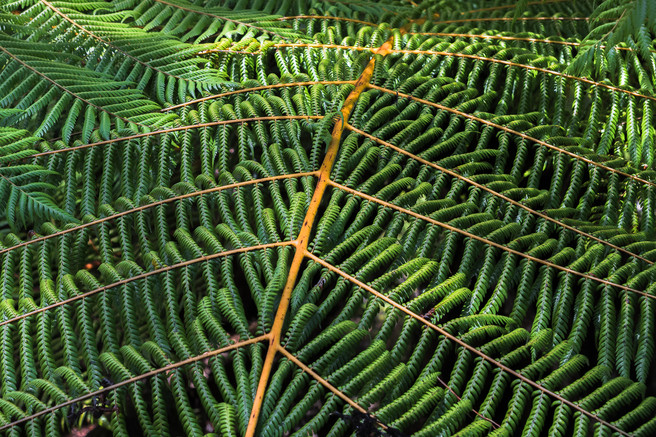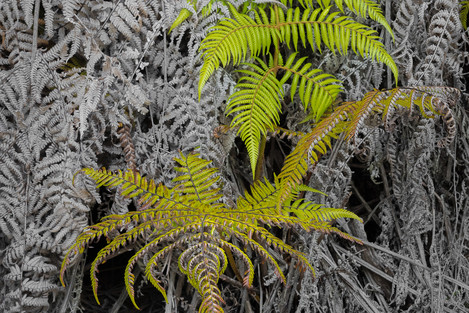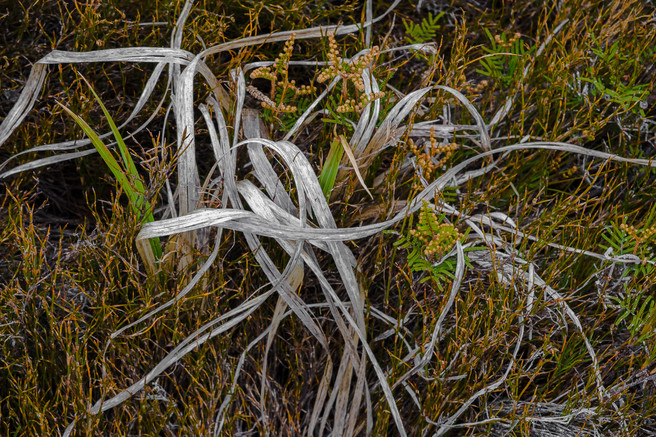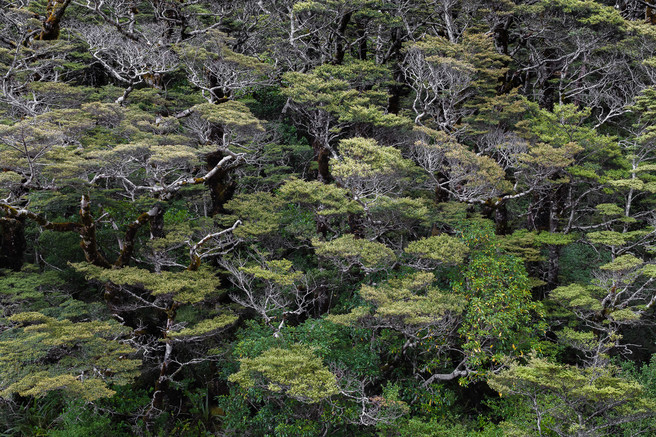Losing myself to the experience

Roy Money
I grew up in the rural south of the USA and the woods were central to my childhood. One of my early photographic inspirations was Elliot Porter’s In Wildness is the Preservation of the World. The natural environment is my typical subject matter because of its many opportunities to lose myself in the process of perception, not unlike listening to captivating music, but in this case I try to find expression for the uniqueness of those moments when a camera in hand motivates me to look more closely.
After a decade of self-study in photography, I went back to school and got an MFA. Subsequent to that I struggled to make a living with photography, and then with some major changes in my circumstances, my creative inspiration shifted to writing. So much of sustaining an art practice is about finding inspiration in your own experience. Fortunately, after a period of time, I happened upon John Daido Loori’s The Zen of Creativity1 and got a new perspective on creativity and paying attention.
Upon graduation from college in 2007 my son moved to Beijing and has lived in East Asia ever since. Because of his move to China, my wife and I went to see him in 2008. Certainly, I had to take a camera but I was unprepared for what I experienced, not only the excitement of photographing in a new place but finding a different cultural ethos about nature that resonated strongly with me. My previous reading certainly had informed me about this and I had seen evidence of it in Chinese and Japanese art. However, this was not an afternoon trip to a museum, it was an extended visit with people and places far away. Time after time in different public locations I noticed what seemed to be a reverence for the natural world as a kind of family ancestry. When I visited the scholar gardens of Suzhou, I felt completely at home on the other side of the globe.
Returning home my motivation to use a camera again was considerable. I also experienced a renewed interest in learning more about the themes of art and nature in Chinese culture, especially as it related to Zen. A subsequent book by Loori, Hearing With The Eye2, soon came to my attention as his photographs of Point Lobos accompany an extensive discussion of a famous Chan (Chinese precursor of Zen) teacher’s thinking about perception and how the insentient natural world can speak to us directly.
In his Zen and Photography3 post from last June, Guy Tal mentions the concept of flow, which psychologists have coined to describe a non-distracted open-mindedness. Guy suggests that both mindfulness and the similar flow experience are implicated in creative activity. Many artists have described this phenomenon, as in Paul Cezanne’s statement “The mountain thinks itself in me”. In Cezanne’s poetic framing there is a porous boundary between painter and subject matter - the breakdown of a conventional distinction between two otherwise separate entities and a sense of mutual intertwining – a phenomenon that is neither one thing nor two things but an ongoing process. The nature of creativity is that the result is not pre-determined.
In the case of photographing nature much of the creativity is in framing the exposure with distance, perspective and light but there is also the issue of how to make contact with the subject, as one would in portrait photography. How do we pay attention so that we hear with our eyes? There are always visual elements in the exposure rectangle but how can our contact help us arrange them? The subject is not a person with a voice and yet it can cause us to stop and wonder and can take our breath away in its appearance. When that happens, we seem to forget what separates us from this other manner of life and being. American Transcendentalist Henry Thoreau alluded to this when he wrote in his Walden dairy about the “living poetry of the earth”. It is noteworthy that Thoreau mentions poetry as this is a particular kind of speech, as contrasted with prose. Poetry is more associated with affect and musical qualities than the usual discursive qualities of prose. And so, to experience a rock or a tree as more than an object with a name we must focus on its sensory qualities and its sheer facticity, its inescapable materiality.
We see this generous sense of our relationship to nature in many indigenous cultures, exemplified by Oglala Sioux elder Black Elk’s remark: “… I was seeing in a sacred manner the shapes of all things in the spirit, and the shape of all things as they must live together like one being.” Mind and nature are words that conventionally refer to divergent concepts in western thought but can point to a fundamental unity in which many indigenous cultures have placed great value. These cultures have the advantage of being spared the divisive dualisms that are so central to modern complex societies.
It is this kind of open inclusive awareness that allows the insentient natural world to speak to us, to animate us and give us great peace as we recognise not only something beautiful but, something we are part of, another kind of being/existence that we have evolved from and that has sustained us, despite our misguided violations of its integrity. To hear this poetry is an experience of immediacy where there is no sharp distinction between subject and object, not unlike what is suggested by flow but here the emphasis is on the relationship between perceiver and perceived. This immediacy is about being in relation to some other in a more encompassing way than the conventional scanning and recognising of discrete entities.
Since I reclaimed my photography many years ago, I have found the natural landscape to be a perennial attraction. This emphasis is inspired in part by Zen but also by other experiences, including a childhood growing up in the rural south and feeling at home in the woods. In any case, the more-than-human world is where I feel most at home in the present when I have a camera in hand. It is an environment where I can easily lose myself in wonder.
These photographs were made on a recent trip to see my far away son, though this time we met him in New Zealand. I had heard much about the diverse natural features and relative geographic isolation of this two-island nation and was excited about the photographic possibilities. This work was an opportunity to investigate my experience of discovery in a new environment. As is often the case, I was drawn to rocks and plants and trees in whose presence I am consistently inspired by amazement at their emphatically different way of being and appearing. I made these photographs during walks on both the north and south islands of New Zealand, mostly in national or municipal parks. My pictures tend to be close views because I am drawn to concrete particulars and I try to move at a pace where I don’t fail to notice what might call out to me. Texture is one way to denote a persistent element in my pictures because it can be a medium of encounter with the intimate physicality of things large and small. As Frederick Sommer once remarked: “In total acceptance, almost everything becomes a revelation”. I try to be open to the element of surprise and to fill the frame with as much as possible of what I find surprising.
I have come to think of my photographic approach as that of losing myself to the experience of seeing, where seeing includes other senses, as well as that of the eyes. Though decisions have to be made in exposure and processing I try to draw on existing skills and intuition so that I can remain in the background as much as possible by letting go of the presumed sharp separation between me and what is other. In the processing phase there is often more time to explore finding accord with the resulting exposure and what I can recall about the camera experience. If I am successful the subject matter expresses its immediacy through my awareness of the details– whether they be serendipities of colour, value, shape, texture, or configuration. If this occurs there may be an evocation of the thisness of things that were before my camera and perhaps a sense of the wholeness that can accompany it, at least for me.
References
1 Zen and Creativity, John Daido Loori, 2004
2 Hearing With the Eye, John Daido Loori, 2008
3 Photography and Zen, Guy Tal, blog/2019/06/19

